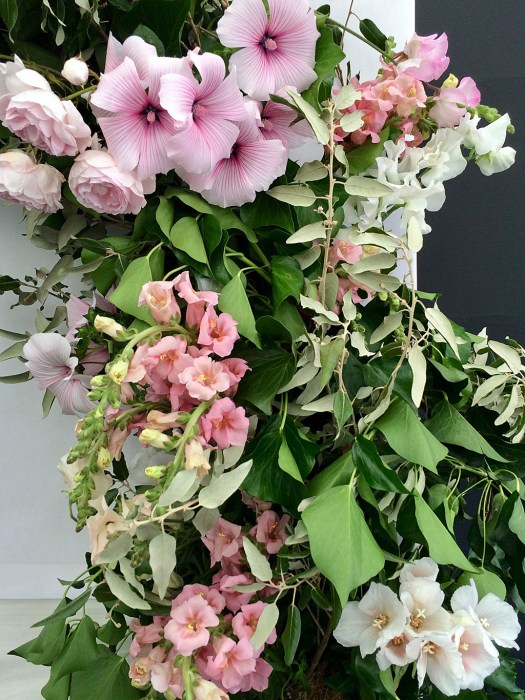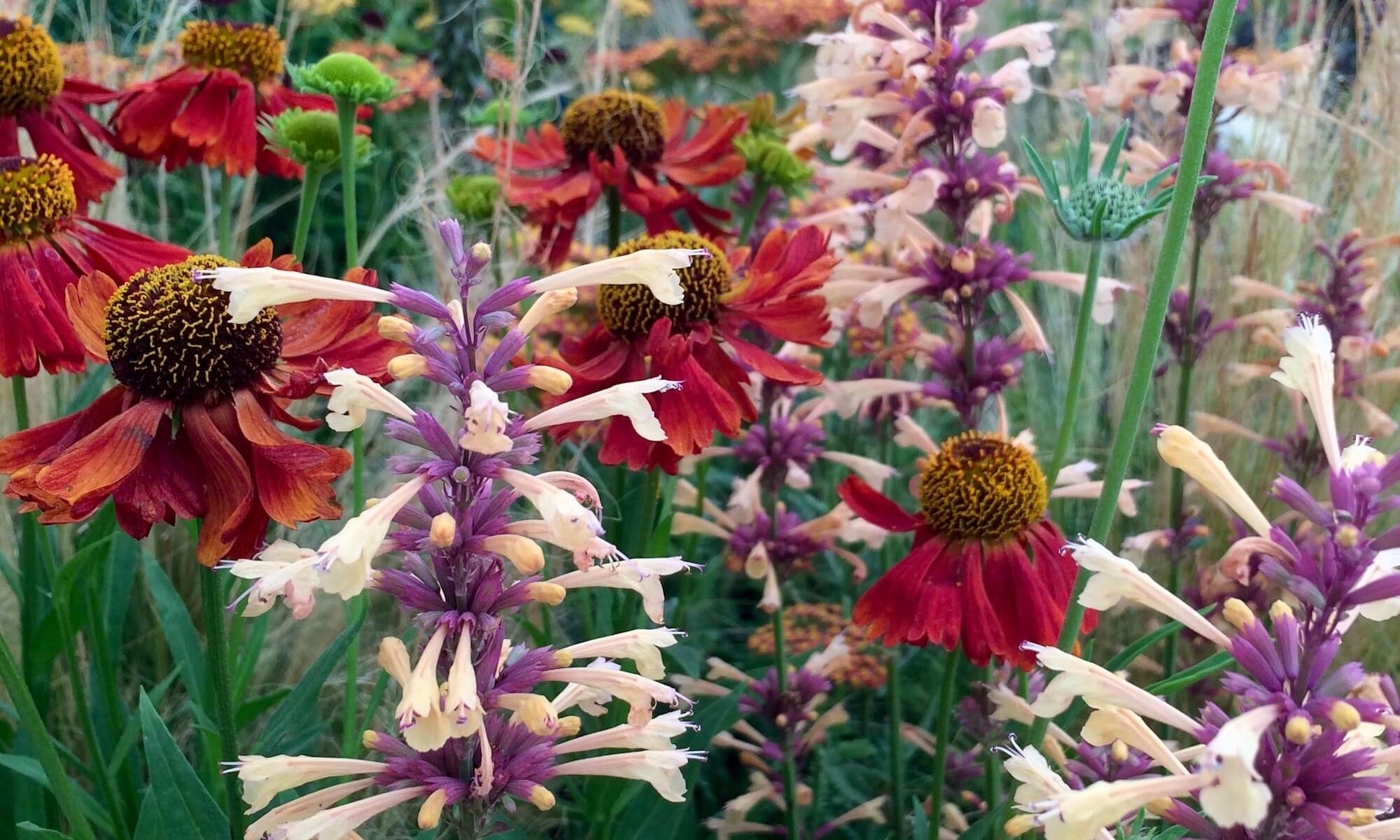
The topic of flower miles is one of the secrets in the closet of the cut flower industry. I travel a good few miles myself so can’t be too judgemental. It’s easier to grow big blousy roses in cool mountains, near to the equator where the days and nights don’t vary in length that much during the year – places like Kenya and Colombia. The supply chains that bring the roses from overseas farms to our homes are longer and more complicated than most people would think.
I remember watching a flower auction in Japan – most flowers we buy in Europe come through a similar auction hub in Holland. If you know how much care, thought and anxiety go into producing flowers in any part of the world, it’s chastening to see them reduced to commodities.
Boxed up flowers are opened briefly on stage and shown to assembled buyers in a room laid out like a lecture theatre. Models trying not to wilt after a long distance flight without water would seem a good analogy, but the flowers had better not be wilting at this point as they have many more miles to travel. Buyers hold their nerves as the price ticks down like a clock. The quicker they press, the more they’ll pay per box. If someone else snaps them up first, it’s game over.

You might have noticed by now that some of the flowers illustrated simply can’t be transported that way. They have been grown by Flowers From The Farm’s members for their display at RHS Hampton Court Flower Show. The society promotes British grown flowers that don’t accrue air miles, being sold as locally as possible.
What attracted me to the society’s Silver medal-winning flower display was its natural grace and – funnily enough – its practicality. If you’ve ever costed out using garden roses for a large scale wedding or event, you’ll know how quickly they can become frankly unaffordable for all but the deepest pockets. The display demonstrated how much further roses and other cottage garden favourites can be made to go when you have a large area to dress by using them as focal points amongst seasonal foliage – and they’ll often be the lovelier for it.

You can save even more money by doing the arrangements yourself. Many Flowers From The Farm members offer flower arranging classes so members of the public can learn some of the skills and tricks of the trade. I even noticed one member offering decorated jam jars to borrow (or buy for £1.50 each) making it possible for her customers to fill a room with flowers for a party or event without breaking the bank.
For the show display, garlands of leaves and ferns created a flowing backdrop, with cottage garden style blooms and flower clusters as highlights. I liked the way some leaves were twisted to show their reverses, adding soft colour highlights and creating a natural, wind-ruffled effect.

The society aims to educate the general public, explaining how we can help our local flower growers and designers seize a bigger slice of the UK cut flower industry (worth around 2.2 billion pounds annually) away from those impersonal flower auctions. In return we have the feel-good factor of knowing our flowers are grown locally, at a smaller scale by groups of friends and families. We have access to a wider range of plant material than conventional flowers that have more air miles too, helping to promote plant diversity. British-grown flowers support our pollinators and many society members grow organically, which means that their flowers have not been sprayed with artificial pesticides, weed-killers or fungicides.
But the big idea that drives Gill Hodgson, society founder, is to encourage more people who love growing plants to make a business of it. You don’t need an especially big plot of land, just time, energy and a passion for flowers.
One of the biggest barriers to business is not knowing how to set about it, which is where a society like this really comes into its own. Members share their knowledge and help raise awareness for British flowers as a whole. As the flowers are sold locally, members aren’t in competition with each other so – if the four ladies I met yesterday are representative – they share in a whole lot of fun and camaraderie.
If you live in Britain and harbour a secret desire to become a flower farmer, it doesn’t need to be a dream – read this.
One of the most intriguing parts of floral design for me is the art of conditioning flowers. A trained florist won’t pick flowers from the garden and use them, they’ll allow them time to rest and refresh first. Think of it as the cut flower version of weaning a baby from one form of sustenance to another. Because most of us haven’t acquired the art of picking and conditioning flowers, we expect many unusual types of cut flowers to have a shorter vase life than they will have when handled by experts.
If you’d love to be able to buy locally grown, properly conditioned flowers and foliage in season in a bouquet or by the bucketful, check out details of your local suppliers on Flowers From The Farm’s website (details below). I searched for my local growers and found a team working in a purpose built log cabin workshop growing scented, heirloom varieties that are too delicate to transport long distances and a grower with a small plot of raised beds and a hedgerow to forage. I’m sure it takes a lot of commitment but it certainly sounds idyllic!
Links for more information
The RHS Hampton Court Flower Show runs until Sunday 8th July 2018. It’s the largest flower show in the world and my favourite.
Flowers From The Farm’s website tells you how to search for a British grower, seller or designer and has lots of interesting snippets about working with flowers. If you live elsewhere, use your normal search engine to see if there is a local group in your area – feel free to leave a link in the comments if you know of other national groups.

These ladies were kind enough to model their flower crowns for me at the show. Below, clicking on the person’s name will take you to their Instagram account if you like to follow creative people there. The company name links to their website. Sarah Diligent of Floribunda Rose is a wedding and event floral designer who holds eco floristry workshops; Niki Roberts of Buckets of Blooms grows seasonal flowers organically, peat free; Caroline Oden of The Hidden Gate Blooms is an artisan grower of chemical-free flowers and florist; Victoria Blum of Victoria Blum Calligraphy decorated the floor stand. I’m suffering from regret now that I didn’t take a picture.

Sarah’s floral crown included English ivy, Sweet William, Garden roses, hypericum berries, nigella with the geometrical Scabious ‘Ping Pong’, which is grown specifically for its seed head. The form of nigella being used fascinated me – it’s always a decorative flower but this one really was splendid with emerald and amethyst twiddly bits between the blue and the green.
If you’re planning to visit the show, please call in to say hello to the Flowers From The Farm team in the Floral Design Studio. I notice their Instagram account is saying you can treat yourself to a flower crown, bracelet or buttonhole while you’re there. That would have been tempting!



Twiddly bits! Another Susurrus phrase I love! What a wonderful post, not just in message but in image. Such combinations! I think my eyes got high. That dizzying rose with the three buds and white snapdragons, not to mention spires and bursts and lacey things, has to be one of my all-time favorites, and that’s saying something. Thanks for all of this — what a great start to my day!
The background is in shade, so looks subtle but there’s lots going on for those of us who pay attention.
Those flowets are lovely, and it’s a great initative, but surely Kenyans should be able to use their climate and other advantages to make a living as well? Given that globalization is a fact already, it seems unfair to shut poorer nations out.
I agree it would be unfair to shut anyone out, but am confident that Kenyan growers will continue to thrive – their climate offers them a great natural advantage as you say. I have met first class Kenyan growers who do a lot of great work in their communities. The Kenyan flower industry is booming, sales having almost doubled in value in the six years since 2010. There have been issues connected to its success such as water use (could water be better used elsewhere in the country?) and water pollution (the effect on fisheries of run off fertilisers, etc) but their industry is generally becoming more eco-friendly too.
British growers are really offering us a choice of a different product and service. A more diverse range of plants, including heirlooms and ‘wild’ flowers and foliage for example. Some of the flowers I saw at the show simply couldn’t travel by air, but they make a creative and beautiful alternative for local weddings and events.
Good point – some flowers don’t travel well. There’s probably room for both.
Great post with a lot of nuance. And beauty, too, of course.
It’s a fascinating industry – the more you know, the more you feel is a mystery – but plants are like that and flowers the most intensely so of all.
Yes, indeed!
Great post–both informative and beautiful. Makes me want to consider moving back to the UK. (I was 8 when I left and I’m now 73, so probably not….)
Have you been able to visit much since leaving as a child?
What a delicious post. I love those floral crowns!
There’s so much ingenuity in wearable flowers. Each of these has a different character but shares in the same spirit.